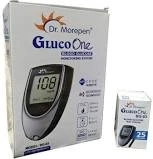A Blood Glucose Monitor is an instant sugar check machine. The patient at home can use it to get instantaneous results. But just how accurate are they? Let us look at some of the factors that can determine the accuracy of a blood glucose monitor.
Test Strips – Test strips have an enzyme that interacts with the blood glucose to produce an electric current. This electric current determines the digital reading on the monitor. Hence, if the strip is damaged, wet, kept in heat, contaminated, or expired, the result will be inaccurate. Ensure to smear the requisite amount of blood on the strip and use strips corresponding to your meter.Environmental Factors – As mentioned above, the test strips have an enzyme. Since an enzyme is nothing but a chemical, it can undergo reactions if not stored properly. Hence, keep it shielded from heat and moisture. Similarly, your body also reacts to different environmental stimuli. For example, dehydration can lead to higher glucose levels, and sugar levels can fluctuate at heights. Ensure to factor them in for higher accuracy.Materials on the Skin – Since the amount of blood required for a strip is minimal, anything on your skin can change the reading. For example, if you have just eaten a sweet and not washed your hands, that sugar can transfer to the test strip and elevate the value. Similarly, water on your hands can dilute the glucose level of the blood.Test Location – For the highest accuracy, take the blood sample from the fingertips. Due to the variation of blood each body part receives during circulation, not all body parts will give the same reading. Places such as thighs, calves, and arms provide noticeably inaccurate reading as compared to the fingertips.Red Blood Cells Variations – Fluctuations in the red blood cell count, also known as hematocrit, can interfere with getting an accurate reading from your blood glucose monitor. ISO standards require a set amount of red blood cells for precise monitoring. Ensure that you are meeting this standard to get the best results.Amount of blood – Too much blood or too little of it can skew the readings one way or the other or fail to give a result at all.Calibration and Coding – Each monitor uses different techniques based on the manufacturer. Thus, calibration for each model is different and ensure to follow them. For coded meters, confirm the code on the strip is input exactly.Buy such models and many other devices and medical goods, such as an ostomy pouch, on online medical distributors such as Smart Medical Buyer.


